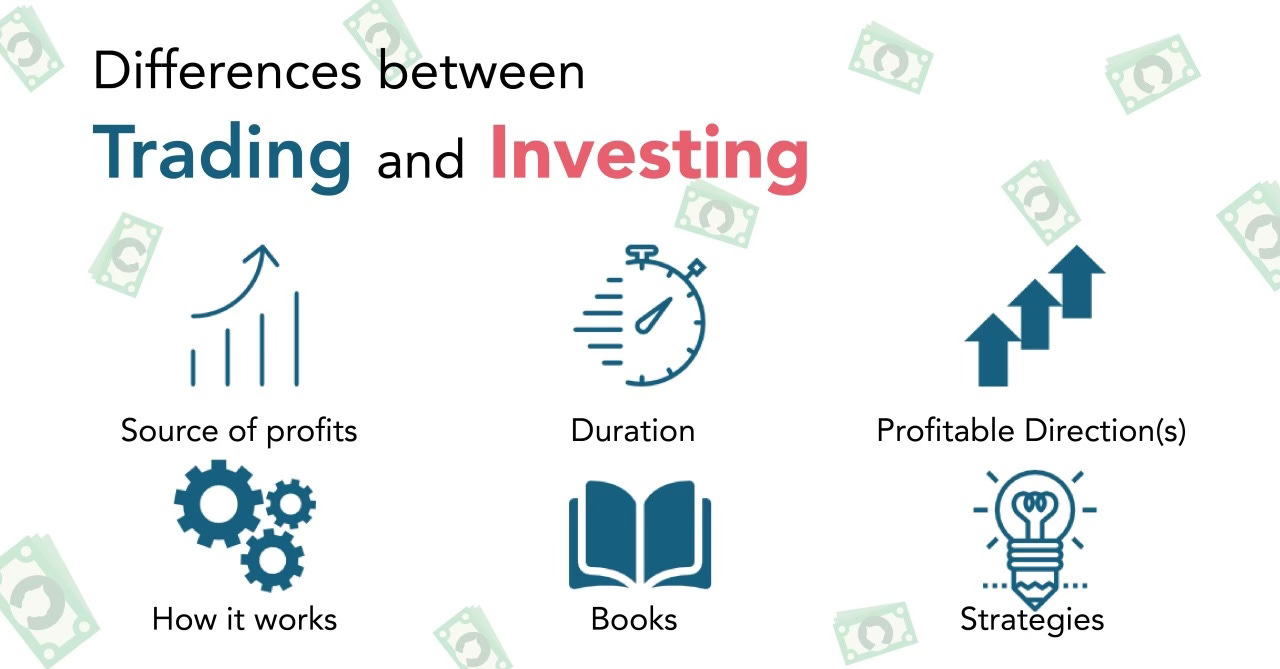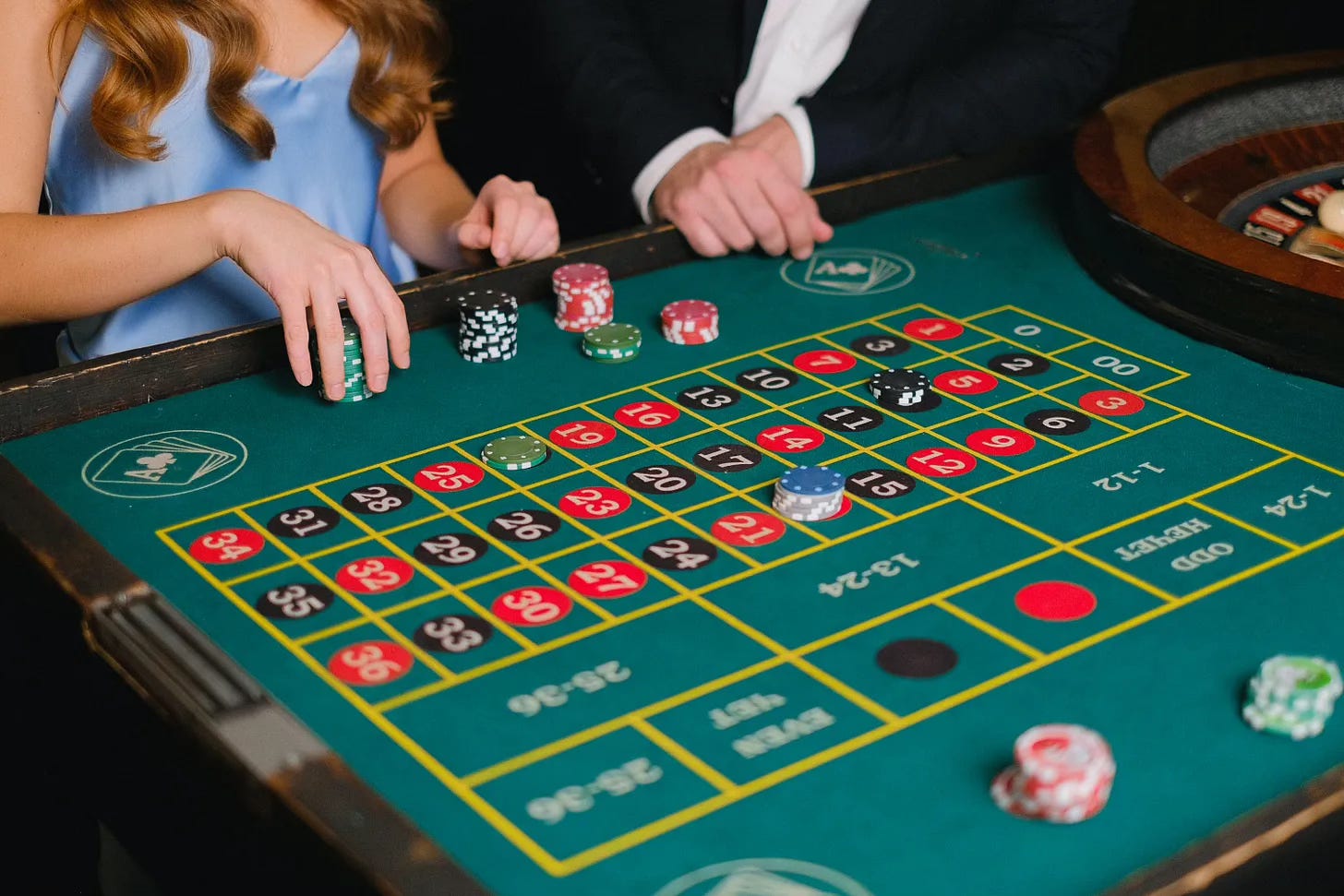A Letter to Investors
In trading as in investing, there are no certainties: differences, approaches and reflections on this complex and fascinating profession
Ideas are divisive spread more than those on which everyone agrees. The history of finance is often portrayed as black or white, good or bad, bulls versus bears. But it is not at all. This creates two sides that continually challenge each other, sparking outrage from trend-followers who are gaining from the uptrend (are they really gaining?) and dismay from the bearish ones who are waiting for a fall that does not come. What is true behind these trends? Let us analyze the data.
Technical bull market is of course identified as a 20% rise from the lows. This type of classification is totally arbitrary even if universally recognized. Same and opposite is true for bear markets. Bull markets last on average much longer than bear markets (about 3.5 times longer, ed.), while declines are more violent and steep. The rises are often driven by a strongly negative consensus about the cycle, with very unbalanced price-to-earnings ratios such as the current ones (about +20 times earnings, ed.). Usually, healthy bullish markets start with lower multiples, with earnings coming out of a phase of declines, with central banks busy cutting rates at a rapid pace. Rhetoric that «this time is different» is what is driving this bullishness based on expectations, discounts, and hypothetical better conditions at the end of the cycle. Truth is that at this stage of the market, it is very complicated to anticipate or predict the next move as interest rates slowly fall.
While everyone is complaining or making excuses for their actions, EVERYONE is unintentionally feeding the division into sides, forgetting what the real reason they are all in the same place is: to make money. There are times to make money. Instead of heeding the tremendous noise we are forced to observe every day on social media, it would be enough to analyze the data and remember that «history repeats itself». We repost a prediction by Carl Sagan, in an interview he gave in 1995. In this case he was talking about what a future American society might look like. Pay attention to the words used:
«I have a presentiment of an America in my children's or grandchildren's time-when the United States will be a service and information economy; when almost all key manufacturing industries will have been transferred to other countries; when the awesome technological powers will be in the hands of a very few, and no one representing the public interest will be able to understand the issues; when the people have lost the ability to set their own agendas or to knowingly question those in authority; when clutching our crystals and nervously consulting our horoscopes, our critical faculties are in decline, unable to distinguish between what makes us feel good and what is true, we slip, almost without realizing it, back into superstition and darkness. The dumbing down of America is most evident in the slow decay of substantive content in the hugely influential media, 30-second sound bites (now reduced to 10 seconds or less), lowest common denominator programming, gullible presentations of pseudo-science and superstition, but most of all in a kind of celebration of ignorance».
What are your feelings after reading these words from over 30 years ago?
Le idee che dividono si diffondono più di quelle su cui tutti sono d'accordo. Spesso la storia della finanza viene descritta come bianco o nero, buoni o cattivi, tori contro orsi. Ma non lo è affatto. Questo crea due schieramenti che si sfidano continuamente, suscitando indignazione da parte dei trend-followers che stanno guadagnando dal rialzo (stanno davvero guadagnando?) e sgomento dai ribassisti che attendono una caduta che non arriva. Cosa c’è di vero dietro questi orientamenti? Analizziamo i dati.
Il bull market tecnico viene naturalmente identificato come un rialzo del 20% dai minimi. Questo tipo di classificazione è totalmente arbitrario anche se universalmente riconosciuto. Stesso discorso analogo e contrario per i mercati orso. I mercati toro durano mediamente molto di quelli orso (circa 3,5 volte in più, ndr), mentre i ribassi sono più violenti e ripidi. I rialzi spesso sono guidati da un consenso fortemente negativo sul ciclo, con un rapporto prezzo/utili molto sbilanciato come quelli attuali (circa +20 volte gli utili, ndr). Solitamente, mercati rialzisti sani partono con multipli più bassi, con utili che escono da una fase di cali, con banche centrali impegnate a tagliare tassi a ritmo serrato. La retorica che «questa volta è differente» è quello che sta trainando questo rialzo basato su aspettative, sconti e condizioni migliori ipotetiche alla fine del ciclo. La verità è che in questa fase di mercato, è molto complicato anticipare o prevedere la prossima mossa mentre i tassi d’interesse calano lentamente.
Mentre tutti si lamentano o cercano scuse per le loro azioni, TUTTI stanno alimentando involontariamente la divisione in schieramenti, dimenticando qual è il vero motivo per cui sono tutti nello stesso luogo: guadagnare. Ci sono periodi in cui fare soldi. Anziché dar retta a quel tremendo rumore che siamo costretti ad osservare ogni giorno sui social media, basterebbe analizzare i dati e ricordarsi che «la storia si ripete». Vi riproponiamo una previsione di Carl Sagan, in un intervista rilasciata nel 1995. In questo caso si stava parlando di come potrebbe essere una futura società americana. Fate attenzione alle parole utilizzate:
«Ho il presentimento di un'America ai tempi dei miei figli o dei miei nipoti — quando gli Stati Uniti saranno un'economia di servizi e di informazione; quando quasi tutte le industrie manifatturiere chiave saranno state trasferite in altri paesi; quando gli impressionanti poteri tecnologici saranno nelle mani di pochissimi, e nessuno che rappresenti l'interesse pubblico sarà in grado di comprendere le questioni; quando il popolo ha perso la capacità di stabilire i propri programmi o di mettere in discussione con cognizione di causa chi detiene l'autorità; quando stringendo i nostri cristalli e consultando nervosamente i nostri oroscopi, le nostre facoltà critiche sono in declino, incapaci di distinguere tra ciò che ci fa stare bene e ciò che è vero, scivoliamo, quasi senza accorgercene, di nuovo nella superstizione e nell'oscurità. L'istupidimento dell'America è più evidente nella lenta decadenza dei contenuti sostanziali nei media, che hanno un'enorme influenza, nei sound bites di 30 secondi (ora ridotti a 10 secondi o meno), nella programmazione del minimo comune denominatore, nelle presentazioni credulone di pseudo-scienze e superstizioni, ma soprattutto in una sorta di celebrazione dell'ignoranza».
Quali sono i vostri sentimenti dopo aver letto queste parole di oltre 30 anni fa?
Who is a good investor?
Any person or entity that allocates capital with the expectation of a long-term return is an investor. Investments are made with a profit motive, over a defined or most often extended period of time. Investments can generate income, create a positive, so-called cash flow to pay dividends, rents and more. When trading, on the other hand, one does so to obtain quick cash flows, cashing out or compensating the market at the end of the day, week or in the most remote scenario, the month. Because of all these underlying motivations, investments tend to be longer in terms of time. As a result, the amount of capital also changes. Our approach already identifies at the outset what is trading and what is investing. Based on the amount of capital, it is possible to figure out whether this money will be used in trading or investing. Usually, a good way to orient yourself is as follows: if the amount invested is large (as a percentage of total assets, ed.) it will be used for investment use; if the amount invested is small it will be used for immediate return, trading use.
The definition of large or small is totally adherent to each investor's lifestyle and expectations: there are no clear absolute or identifying terms for saying large or small. The investment and risk tolerance of one's money must be sewn to each of us. One very important thing to evaluate in these terms is the Time factor. That is, investing a large sum of money would impose more caution in the approach and consequently the choice of investment products with small fluctuations, which consequently yield less. Conversely for small amounts that can generate a larger return in percentage terms but less impactful in investors' pockets.
Another approach that traders predominantly take is to use large sums of money to put into speculative trades, making Time work very little. Such techniques called scalping or intraday trading should be handled with extreme care for the neophyte investor. For our part, we strongly advise against this type of approach until the investor's awareness is so high that he or she is in total control of all this complex yet fascinating trade requires. If we contrast thesis of investment with speculation, in our view it tends to have a short time horizon. From a few hours to days to a few months. If I buy a stock and it goes up 30-50% in a few days, for us it is speculation. Even in speculation, I am taking a risk: the risk is defined before I enter. If I don’t know the risk, I’m neither a speculator nor a trader but only a gambler.

Chi è un buon investitore?
Qualsiasi persona o entità che stanzia un capitale con l'aspettativa di un rendimento a lungo termine è un investitore. Gli investimenti vengono effettuati con un fine di lucro, in un arco di tempo definito o al più delle volte prolungato. Gli investimenti possono generare reddito, creare un flusso di cassa positivo, il cosiddetto «cash flow» per pagare dividendi, affitti e altro ancora. Quando si fa trading invece lo si fa per ottenere dei flussi di cassa veloci, incassando o risarcendo il mercato alla fine della giornata, della settimana o nell’ipotesi più remota, del mese. A causa di tutte queste motivazioni di fondo, gli investimenti tendono ad essere più lunghi in termini di tempo. Di conseguenza, anche l’ammontare del capitale cambia. Il nostro approccio identifica già in partenza cosa è trading e cosa investimento. In base all’ammontare del capitale è possibile capire se questo denaro verrà utilizzato nel trading o nell’investimento. Solitamente, un buon modo per orientarsi è il seguente: qualora la somma investita fosse cospicua (in percentuale al totale del patrimonio, ndr) verrà utilizzata per uso investimento; qualora la somma investita fosse piccola verrà utilizzata per un ritorno immediato, uso trading.
La definizione di grande o piccolo è totalmente aderente allo stile di vita e alle aspettative di ogni investitore: non esistono termini assoluti o identificativi chiari per dire grande o piccolo. L’investimento e la tolleranza al rischio del proprio denaro va cucita addosso ad ognuno di noi. Una cosa molto importante da valutare in questi termini è il fattore Tempo. Ovvero, investire una somma grande di denaro imporrebbe più prudenza nell’approccio e di conseguenza la scelta di prodotti d’investimento con oscillazioni contenute, che rendano di conseguenza meno. Viceversa per i piccoli importi che possano generare un ritorno più grande in termini percentuali ma meno impattanti nelle tasche degli investitori.
Un altro approccio che adottano prevalentemente i traders è quello di utilizzare grosse somme di denaro da destinare ad operazioni speculative, facendo lavorare molto poco il Tempo. Tali tecniche chiamate scalping o trading intraday vanno maneggiate con estrema cura per l’investitore neofita. Dal canto nostro, sconsigliamo vivamente questo tipo di approccio finché la consapevolezza dell’investitore non sia talmente alta da avere un totale controllo di tutto quello che richiede questo mestiere così complesso ma così affascinante. Se contrapponiamo questa tesi di investimento a quella di speculazione, a nostro avviso tende ad avere un orizzonte temporale ridotto. Da poche ore a giorni, fino a qualche mese. Se compro un'azione e questa sale del 30-50% nel giro di pochi giorni, per noi si tratta di speculazione. Anche nella speculazione, sto rischiando: il rischio è definito prima di entrare. Se non conosco il rischio, non sono né uno speculatore né un trader ma solo un giocatore d'azzardo.
Always play with the A-B scenario («IF mode»)
Another key differentiator between investment and speculation is leverage. In speculation, as in futures or cfd, enormous leverage is available, often 1:50 or even more (with cfd for example, ed.). For us, the margin for error is extremely small in these trades, so risk must be defined (stop loss) or strategies must be structured to provide hedging. We share this simply to convey to you our understanding of investment and trading concepts, the framework for investing. It is not the only way, perhaps not even the right way, and everyone has to wear his or her own suit. Anyone trying to be in the markets should have one.
Don’t make the mistake of confusing investing with speculation. Speculation and trading are the same thing. Speculation is not concerned with future earnings or dividends; its only goal is to profit from a price movement in the underlying asset. We firmly believe that anyone can be a good investor. However, being a good speculator is a game for the few. A speculator is a professional, like a doctor, an engineer or a cook. There are so many clueless and gurus around today who would sell their souls to the devil to sell you the latest course that will make you The Wolf of Wall Street. Being an investor is a good habit, being a good planner, being a financial expert, and I think everybody should be financially smart.
In Italy, Europe and more generally globally, the sense of quick results and instant gratification is pervasive (like the dopamine that TikTok dumps on you when you watch silly short videos, ed.). We also see this in the fitness industry: do you want to get skinny? Or «How to lose weight by eating». Get abdominal plastic surgery or take a fat-burning pill. Working out every day, sweating and lifting weights is lame when we can pay for surgery and get a sculpted physique. We see it in the food industry with the proliferation of 2-minute meals in supermarkets and fast food on every street corner. These fads are everywhere, and investing and trading are no different. The urge to make you rich, to make you greedy, is everywhere. When we see influencers openly peddling their wealth on social media, it only pushes people even more to look for a holy grail that can give huge results with little or no effort. Spoiler: there is no Holy Grail, particularly in the finance and investment sector. The only one who gets instantly rich is those who have insider information, the insider traders but as far as I know it is still an illegal practice today.
No one knows what will happen next in life and investment. The only thing a good trader and investor can do is to know what to do next. Not knowing the next market move, he has to structure a set of assumptions, what we call «IF mode». It's all about consistency. In trading as in investing, there are no certainties. In Dax Trading Ideas each week we try to address topics or insights that can improve your financial literacy and open your mind about certain lived life situations that each of us has irrevocably been through. Those who try to sell you certainties, foolproof methods and 1-to-5 risk-return rules, forget it. There is no certainty in this world, only probability. If you try to get 5 with 1, you have only a 20% chance of succeeding. In other words, 4 times out of 5 you will lose: are you ready to face losses 4 times out of 5 and psychologically bear the bitter taste of defeat?
Giocare sempre con l’AB scenario («IF mode»)
Un altro elemento di differenziazione fondamentale tra investimenti e speculazione è la leva finanziaria. Nella speculazione, come nei futures o nei cfd, è disponibile una leva enorme, spesso 1:50 o anche di più (con i cfd ad esempio, ndr). Per noi, il margine di errore è estremamente ridotto in queste operazioni, pertanto va definito il rischio (stop loss) oppure strutturare delle strategie che garantiscano una copertura (hedging). Condividiamo questo semplicemente per trasmettervi la nostra comprensione dei concetti di investimento e di trading, il quadro di riferimento per gli investimenti. Non è l'unico modo, forse non è nemmeno quello giusto ed ognuno deve indossare il proprio vestito. Chiunque provi a stare sui mercati dovrebbe averne uno.
Non fate l’errore di confondere l'investimento con la speculazione. La speculazione e il trading sono la stessa cosa. La speculazione non si preoccupa di guadagni o dividendi futuri; il suo unico obiettivo è trarre profitto da un movimento di prezzo dell'attività sottostante. Siamo fermamente convinti che chiunque possa essere un buon investitore. Tuttavia, essere un buon speculatore è un gioco per pochi. Uno speculatore è un professionista, come un medico, un ingegnere o un cuoco. Oggi in giro ci sono tantissimi sprovveduti e fuffa-guru che venderebbero l’anima al diavolo pur di vendervi l’ultimo corso che vi farà diventare The Wolf of Wall Street. Essere un investitore è una buona abitudine, è un buon pianificatore, è un esperto di finanza e credo che tutti dovrebbero essere finanziariamente intelligenti.
In Italia, in Europa e più in generale a livello globale, il senso di risultati rapidi e di gratificazione istantanea è pervasivo (come la dopamina che vi scarica TikTok quando guardate dei stupidi video brevi, ndr). Lo vediamo anche nell'industria del fitness: vuoi diventare magro? Oppure «Come dimagrire mangiando». Fai una plastica addominale oppure prendi una pillola brucia-grassi. Allenarsi ogni giorno, sudare e fare sollevamento pesi è da sfigati quando possiamo pagare un intervento chirurgico e ottenere un fisico scolpito. Lo vediamo nell'industria alimentare con la proliferazione di pasti in 2 minuti nei supermercati e di fast food a ogni angolo della strada. Queste mode sono ovunque, e gli investimenti e il trading non sono da meno. La voglia di farvi arricchire, di ingolosirvi, è ovunque. Quando vediamo gli influencer spacciare apertamente la loro ricchezza sui social media, questo non fa che spingere ancora di più le persone a cercare un Santo Graal che possa dare risultati enormi con poco o nessuno sforzo. Spoiler: non esiste nessun Santo Graal, in particolare nel settore della finanza e degli investimenti. L’unico che si arricchisce all’istante è chi ha informazioni privilegiate, gli insider trader ma a quanto mi risulta è ancora oggi una pratica illegale.
Nessuno sa cosa succederà dopo, nella vita e negli investimenti. L’unica cosa che può fare un buon trader e un bravo investitore è sapere cosa fare dopo. Non sapendo la prossima mossa del mercato, deve strutturare una serie di ipotesi, quella che noi chiamiamo «modalità IF». E’ tutta una questione di coerenza. Nel trading come negli investimenti non esistono certezze. In Dax Trading Ideas ogni settimana cerchiamo di affrontare argomenti o spunti che possano migliorare la vostra cultura finanziaria e aprire la mente su determinate situazioni di vita vissuta a cui irrimediabilmente ognuno di noi è passato. Chi prova a vendervi certezze, metodi infallibili e regole di rischio rendimento 1 a 5, lasciate perdere. Non c’è certezza in questo mondo, solo probabilità. Se con 1 provate ad ottenere 5, avete soltanto il 20% di probabilità di riuscirvi. In altre parole 4 volte su 5 perderete: siete pronti ad affrontare perdite 4 volte su 5 e sostenere psicologicamente il sapore amaro della sconfitta?




